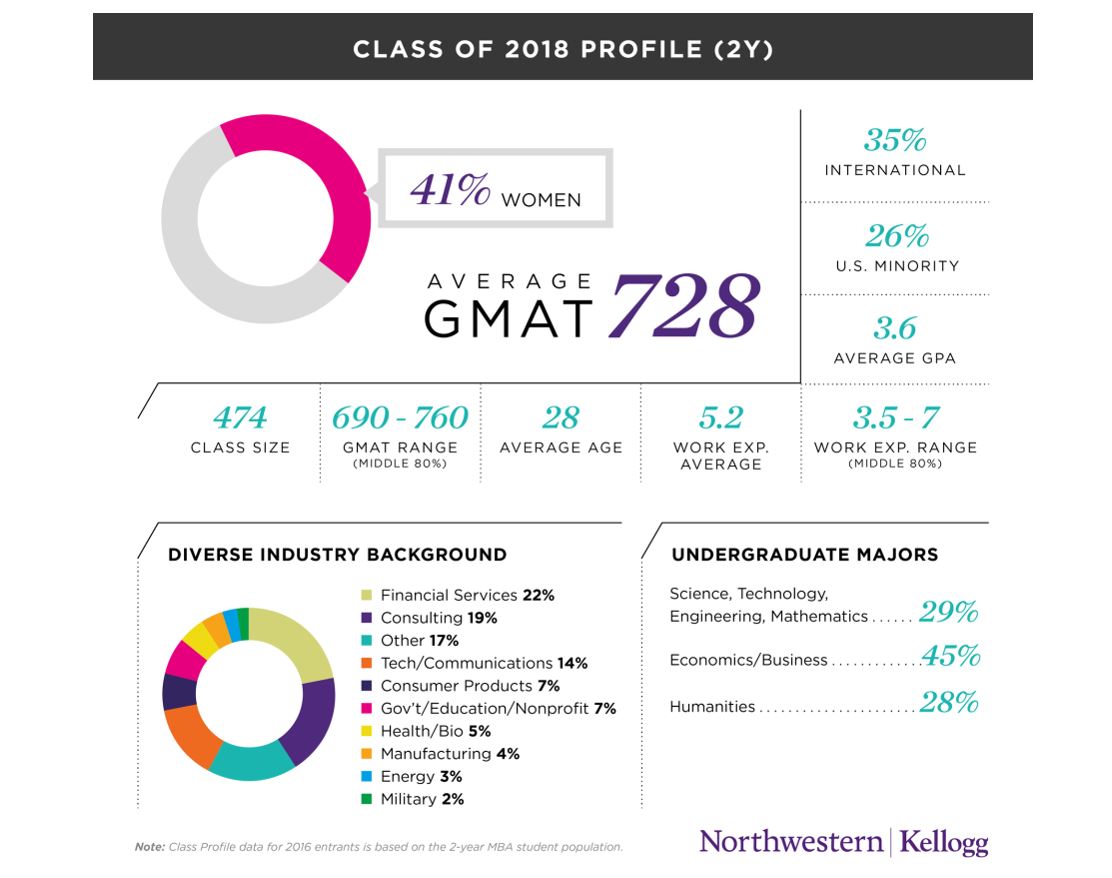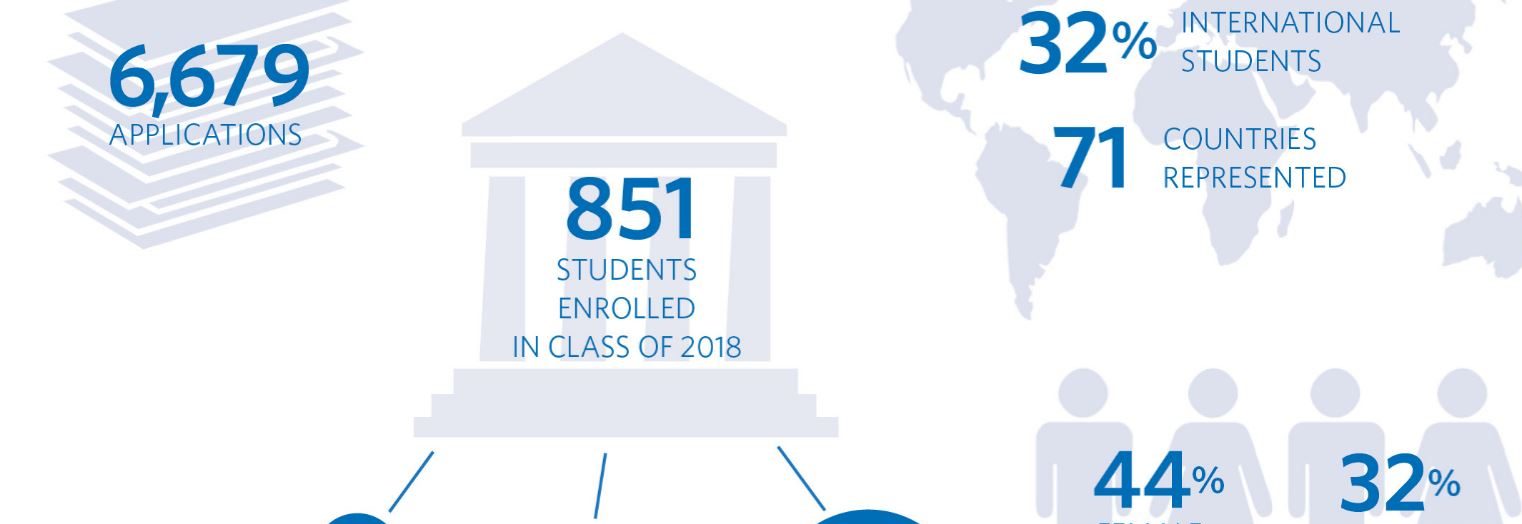Diversity of Pre-MBA Work Experience?
Though the average amount of work experience for incoming Wharton students in the Class of 2018 is five years—unchanged from last year—the overall span of time spent working before business school contracted this year. Last year, the range extended from zero to 16 years, whereas this year’s range is zero to 13 years. Kellogg’s incoming class this year brings an average of 5.2 years work experience, with 80 percent of the class falling within 3.5 and 7 years.

As for just how these candidates spent those years working, there are some interesting shifts in industry. Of Wharton’s incoming class, 36 percent bring a background in finance, up from 34 percent last year. For comparison, just 22 percent of Kellogg’s incoming class came from financial services and a mere 11 percent of the HBS class did.
Given the dominance of finance backgrounds, Wharton breaks out the industry further, into investment banking, private equity/venture capital (PE/VC), other financial services and investment management. Notably, incoming Wharton students with experience in PE/VC jumped three points this year, to 13 percent (more than the percentage of HBS students from the finance industry overall).
But despite its dominance in finance, incoming Wharton students also led the pack in terms of bringing consulting backgrounds with them. Roughly 23 percent of the new class at Wharton is coming from consulting, higher than HBS’s 15 percent and Kellogg’s 19 percent.
Where Wharton lags in terms of the pre-MBA experience of its entering class is tech/e-commerce. Wharton reports that 9 percent of this class comes from tech, up from just 6 percent last year. At HBS, 15 percent of students come from tech industry, and at Kellogg, that figure is 14 percent, nearly double last year’s 8 percent.
More Humanities Undergrads Head to Wharton

As far as undergraduate backgrounds are concerned, we note some interesting variety between the schools. At Wharton, 46 percent of the class majored in humanities in college, up from 42 percent the year before. STEM students (those with science, technology, engineering or math undergraduate backgrounds) also gained some ground, rising to 28 percent from 25. Business undergraduates, for their part, fell to 26 percent from 29 percent.
In contrast, at Kellogg economics/business undergrads still make up the largest slice of the incoming class, 45 percent. The rest of the class is pretty evenly split between humanities (28 percent) and STEM (27 percent) undergrads. And at HBS, economics/business undergrads are more predominant, at 41 percent, though followed not far behind by STEM undergrads, who make up 38 percent. Undergrads from the humanities and social sciences are just 21 percent of this year’s incoming HBS class.
*Intro image from Wharton’s Class of 2018 Profile.




